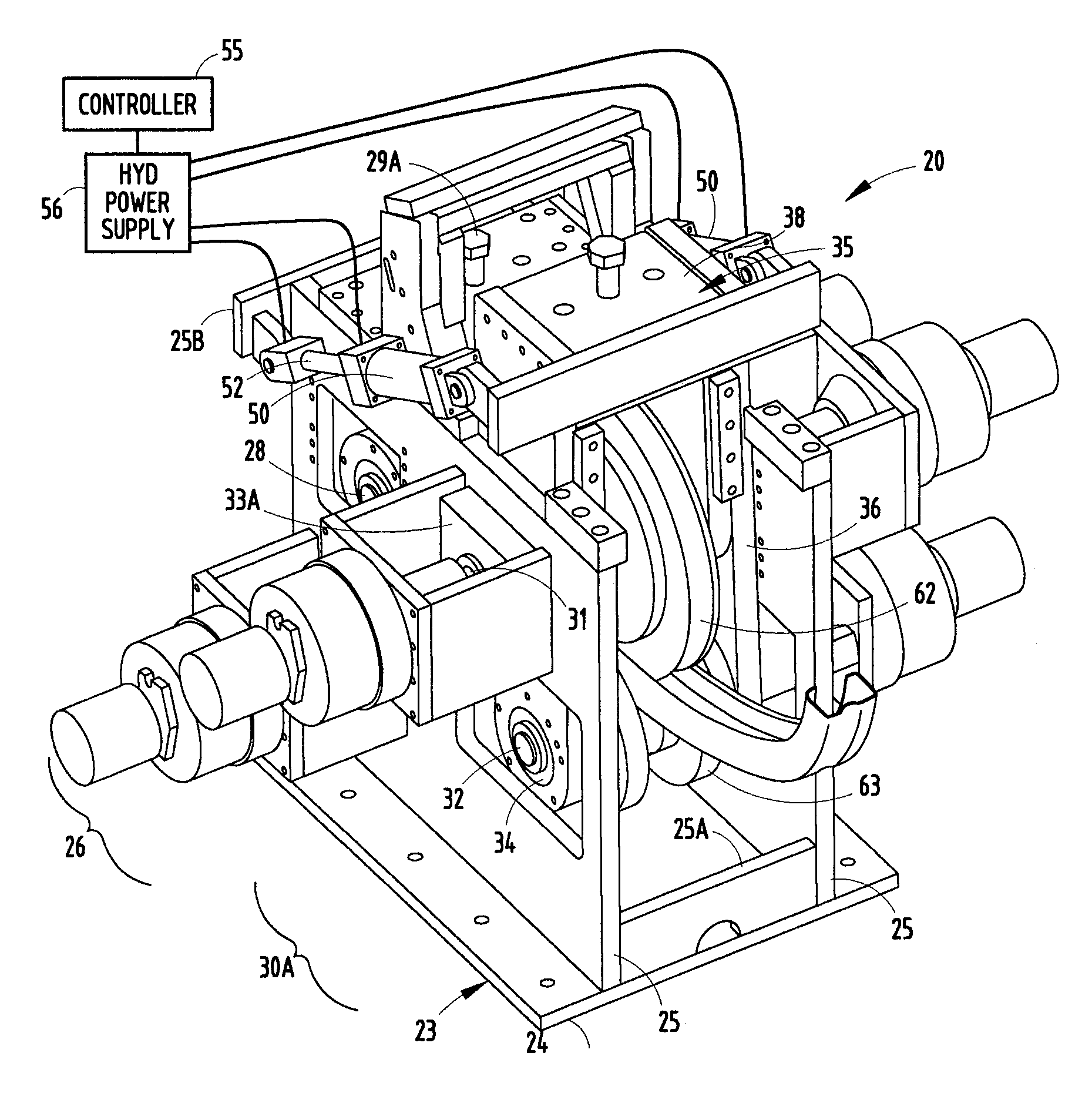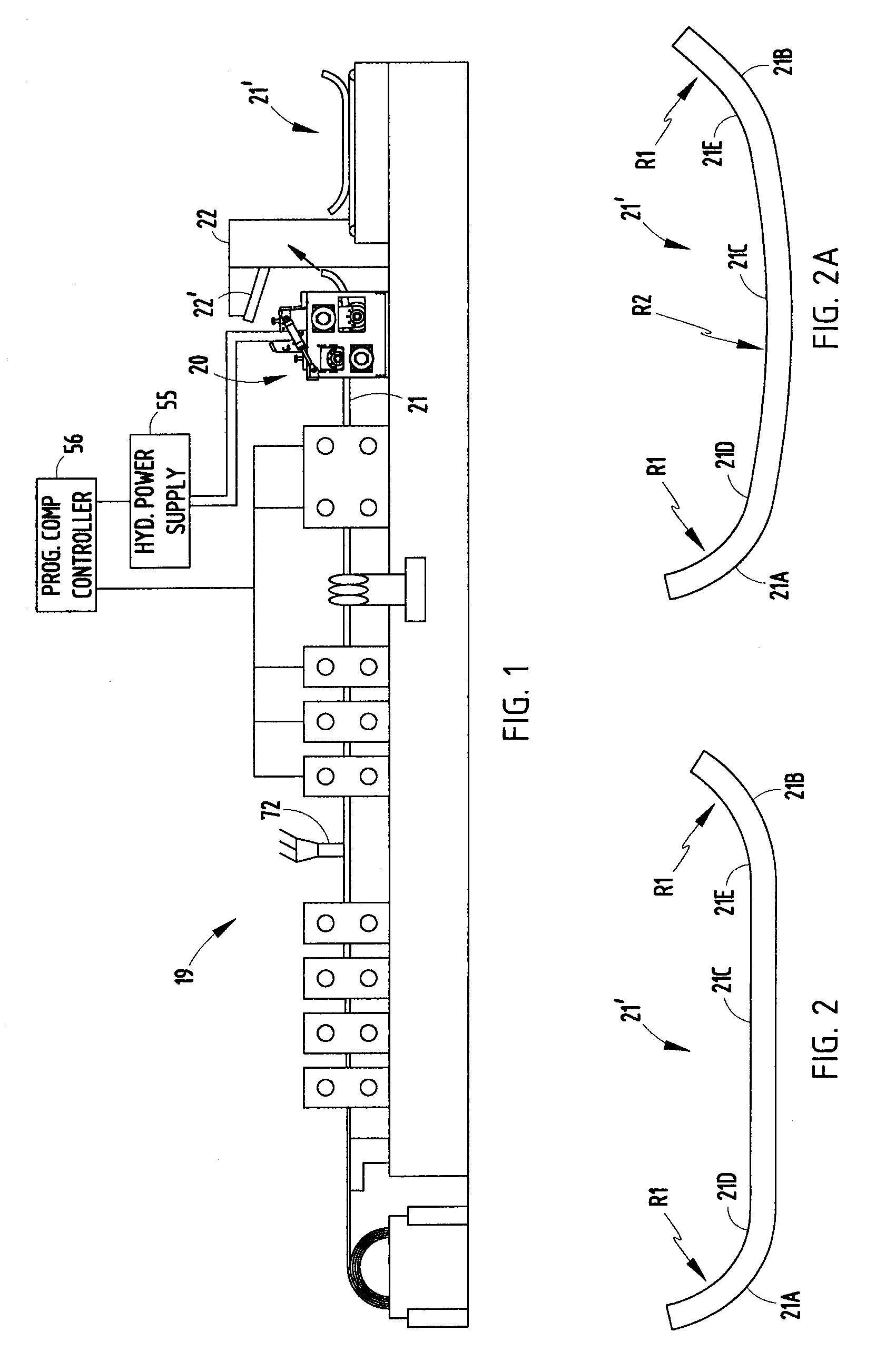Roll-former apparatus with rapid-adjust sweep box
a technology of rolling-former and sweep box, which is applied in the direction of metal rolling, metal rolling arrangement, manufacturing tools, etc., can solve the problems of increasing in-process inventory, increasing dimensional variability, and adding cos
- Summary
- Abstract
- Description
- Claims
- Application Information
AI Technical Summary
Benefits of technology
Problems solved by technology
Method used
Image
Examples
Embodiment Construction
[0032] The present roll-former mill apparatus 19 (FIG. 1) includes a auto-variable sweep station 20 adapted to make roll-formed vehicle bumper beams 21′ (also called “bumper beam segments” or “reinforcement beams” herein) having a constant cross-sectional shape, but having a varied longitudinal curvature formed by the sweep station 20. The sweep station 20 is positioned in-line with and at an output end of the roll-former apparatus 19. The roll-forming portion of the apparatus 19 is not unlike that shown in FIG. 4 of Sturrus U.S. Pat. No. 5,092,512, and the teachings of the Sturrus '512 patent are incorporated herein in their entirety. The present sweep station 20 includes a multi-roller system that is computer-controlled and automated. The sweep station permits quick and accurate adjustment in sweep radii, allowing the sweeping operation to be repeatedly varied during the roll-forming process. By this arrangement, dissimilar sweep radii can be repeatedly and accurately formed along...
PUM
| Property | Measurement | Unit |
|---|---|---|
| Speed | aaaaa | aaaaa |
| Shape | aaaaa | aaaaa |
| Radius | aaaaa | aaaaa |
Abstract
Description
Claims
Application Information
 Login to View More
Login to View More - R&D
- Intellectual Property
- Life Sciences
- Materials
- Tech Scout
- Unparalleled Data Quality
- Higher Quality Content
- 60% Fewer Hallucinations
Browse by: Latest US Patents, China's latest patents, Technical Efficacy Thesaurus, Application Domain, Technology Topic, Popular Technical Reports.
© 2025 PatSnap. All rights reserved.Legal|Privacy policy|Modern Slavery Act Transparency Statement|Sitemap|About US| Contact US: help@patsnap.com



